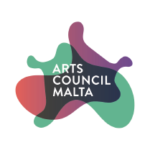Victoria reigns …
For the past five weeks, the capital city of Gozo, Victoria, reigned supreme. A hectic run of 33 concerts, uninterruptedly held over a period of five weeks, made of our little city a great centre for extraordinarily high-profile and high-powered music-making. Concerts ranged from solos to ensembles of the most diverse and varied combinations, choirs, big bands, string orchestras and two concerts by the Malta Philharmonic Orchestra. Prof. Joseph Vella, Artistic Director of the Victoria International Arts Festival, together with his committee, put together an eclectic programme that suited the tastes of most and the record audiences we had for each and every concert attested to the appreciation of our project. Venues took us to different places, from St George’s Basilica (to include the fantastic Aula Mgr G. Farrugia), which is the base where concerts are held, to St Augustine and St Francis Convents, the wonderful roof-top of Il-Ħaġar, Heart of Gozo, and the Victoria Library. We also had a concert scheduled for the Cittadella Centre for Culture and the Arts but given the extensive renovations taking place there we had to change that venue for this year.
The final concert in the range was given by the Malta Philharmonic Orchestra featuring Czech cellist Šimon Veis and conducted by Joseph Vella. The Laudate Pueri Choir, resident choir at St George’s Basilica, also took part. The Basilica was thronged with patrons, so much so that many were left standing in the side for it was packed solid. The concert started at 8pm and by 7.30pm the un-reserved seats were already all taken. Dignitaries included members from the Diplomatic Corps apart from Government ones were present, together with members of the clergy led by H.L. Mario Grech, Bishop of Gozo, together with the Greek Orthodox Patriarch who is here in connection with the extraordinary festivities being held in honour of St George, patron saint of Gozo.
After a brief welcome address from Rev. George Joseph Frendo, assistant artistic director of the Festival, the concert started with Mozart’s Overture to Don Giovanni. Ably led by Marcelline Agius, the Malta Philharmonic Orchestra responded readily to Joseph Vella’s tempo and this lovely work bristled forth in its dynamic power, foreboding chords masking a thin veneer of comicality uneasily blending with tragedy.
Šimon Veis is one formidable cellist with an impressive profile attesting to his sheer musicality, intelligence and technical prowess. His is a most elegant tone, refined and contained with a strong and powerful volume when the occasion merits. Tackling Haydn’s beautiful Concerto no. 2 in D Major from memory, Veis mesmerized the audience with his composure, assurance and interpretation.
The Concerto started with a long, rich orchestral exposition, in which the principal themes of the first movement, an Allegro moderato, were presented. This was finely played by the orchestra, leading to the cello’s first utterance seamlessly. The first theme introduced a mood of delightful repose which was slightly modified, but not interrupted, by the pleasing chromaticism of the second theme. When the soloist reiterated the first theme, adding beautiful, and technically demanding, ornamentation, the listener was able to enjoy the balanced, mellifluous interplay between the soloist and the orchestral accompaniment. Haydn’s ritornellos are lengthy, particularly the second one, but critics who bemoan the length of this movement seem to ignore the sheer aesthetic pleasure that Haydn’s music, in concise or elaborate form, provides when well played. While the development section imposed a variety of technical demands on the cellist, whose left hand literally raced up and down the fingerboard immaculately, this part of the movement contained many passages of enchanting lyricism.
Haydn’s slow movements are noble and aristocratic in tone and lyrical beauty. There are very few composers who can be said to produce sublime moments but Haydn is one of them. In the movement, rapport between soloist and conductor reached exquisite proportions. In the Adagio, which the soloist opened with an expansive, almost dreamy, theme, the feeling of hushed tranquillity was maintained. Yet, as in the first movement, what the composer conveyed to the listener is not languor, but a realization that intuitions of wisdom and beauty can, and sometimes must, be savoured slowly, even if that offends the impatient listener. Reminiscent of a gentle, unassuming operatic aria, the main theme was presented three times, enabling the soloist to express this musical idea in different manners, which he did most admirably. These reiterations of the theme maintained the flow, as it were, of the musical discourse. Once the orchestra softly restated the opening tune, the violoncello indulged in a quiet cadenza and led the orchestra into a brief coda.
The final Allegro is a rondo revolving around a bright pastoral tune of an almost childlike simplicity. The violoncello moved through the musical landscape with jaunty rhythms and intricate passage-work. On its second entrance, the pastoral theme appeared in a minor mode (something that Beethoven was later to excel at), which gave the soloist an opportunity to perform ascending arpeggio-like figurations leading to another cadenza. The main theme regained its sunny nature for a last appearance, which surrounded virtuosic passage-work for the violoncello. However, there was more to this movement than a fanciful blend of pastoral motifs and flashy virtuosity: the technically involved elaborations of the theme revealed musical ideas and feelings of remarkable depth and intensity.
The final and main work on the programme featured Beethoven’s Symphony no. 7. However, before that, the Laudate Pueri Choir sang Joseph Vella’s ‘a cappella’ motet Vinea fuit pacifica, taken from the composer’s Music for a Wedding op. 34. This all-too-short motet offered a moment of languid detachment from the emotional involvement of the orchestral works. To say that Joseph Vella is well-known would be an understatement; he is an iconic figure for those who look to a standard-bearer. Writing for every imaginable medium, he excels at what he does and the level he attains never fluctuates or sags. His natural aptitude and flair for melodic beauty is legendary – his seems to be an inexhaustible well of tunes, forever replenishing without regurgitating itself. In fact, one could say of Vella’s talent for melody that “age cannot wither her/nor custom stale its infinite variety”, to quote Shakespeare, albeit in a totally different context. He keeps inventing them; they are his but they are forever new. One can only be respectful of such natural talent which no amount of technical expertise can hope to emulate.
This motet was beautifully sung by the Laudate Pueri Choir, for whom Vella has written so much and which the choir, in turn, always includes works of his in its programmes. Largely homophonic in style, the work makes use of daring modulations, touching the extreme tonal and dynamic gamut particularly for the sopranos and the basses. It was impeccably phrased and the beauty of the singing voices added to the fine quality of the work.
Beethoven’s Symphony no. 7 is a tour-de-force in the repertoire, with a four-movement paradigm that literally covers the entire formal, intellectual and emotional spectrum. The orchestra was well-controlled, with some very fine playing from the woodwind and the brass sections, with an ever sound and solid string section that performed the lyrical moments, particularly in the haunting second movement, with great sensitivity.
While the Poco sostenuto introduction began by observing time-honoured rules of harmony, within sixty-two measures it modulated from A major to the alien keys of C and F major, then back again. Such is the adventurous spirit of the composer in this work. The transition from solemn 4/4 meter to 6/8 for the balance of an evergreen Vivace movement (in sonata form) further exemplified Beethoven’s conceptual stretch.
Coming from the twenty-minute funeral march of his earlier Eroica Symphony, Beethoven creates an allegretto ‘slow’ movement. This is, arguably, one of the most haunting, beautiful and sublime movements in the symphonic canon. Beethoven establishes a funerary mood (without its being specifically elegiac) through the repetition of a 2/4 rhythmic motif in A minor, the most sombre key of the tempered scale. In this movement, the lower strings were fine-tuned not in terms of acoustic agreement but emotionally and intellectually. With such a lyrical movement it is excusable if the interpretation veers towards the emotional; however, Vella’s steady hand avoided this pitfall and the reading of the score did not, at any moment, sacrifice form for feeling. Thus, it maintained that classical poise that Beethoven is so famous for while rendering the music so beautiful and poignant.
In this work, the key of A minor serves more than an expressive function; it readies the audience for the reappearance of F major in a tumultuous five part Scherzo marked Presto. This Scherzo looks forward to the frenetic one of Beethoven’s final Symphony, no. 9. Two Trios go slower (assai meno presto), in D major, which is a long distance harmonically, in 1812, from the work’s A major tonic. The beginning of a third Trio turns into a short coda capped by five fortissimo chords. This third movement was tackled with confidence and mastery; it could so easily fall to pieces unless the right tempo is taken and the contrapuntal network is clearly defined.
The key of A major finally returned in the final movement. Here, more than anywhere else in his orchestral music, Beethoven is almost seized by a supernatural frenzy. There is a kind of a spiralling sound that doubles back on itself to reproduce itself in a different guise. One things of a gyre, in which an object spins out of control unless unleashing itself with a controlled power. Such was the effect created by the evening’s interpretation: a whirl and swirl of sound pounding its way with a breathless frenzy. As in the Allegretto, the rhythm is 2/4, but sonata-form replaces the ternary form. There is also a grand coda longer than the exposition, the development, or the reprise, which, furthermore, begins in B minor! However, modulations bring it back to A major in time for a heart-pounding final lap with the accelerator pressed to the floor.
This work came across as monumental in both conception and execution. The lengthy, robust and warm applause that greeted the final chord was utterly spontaneous and well-deserved.
This concert brought to a close a magnificent five weeks of music, of wonderful experiences shared and lived together. We look forward to the 18th edition of the Victoria International Arts Festival with an assured expectation, in the knowledge that this project truly delivers more than it promises!
Alla prossima!!




